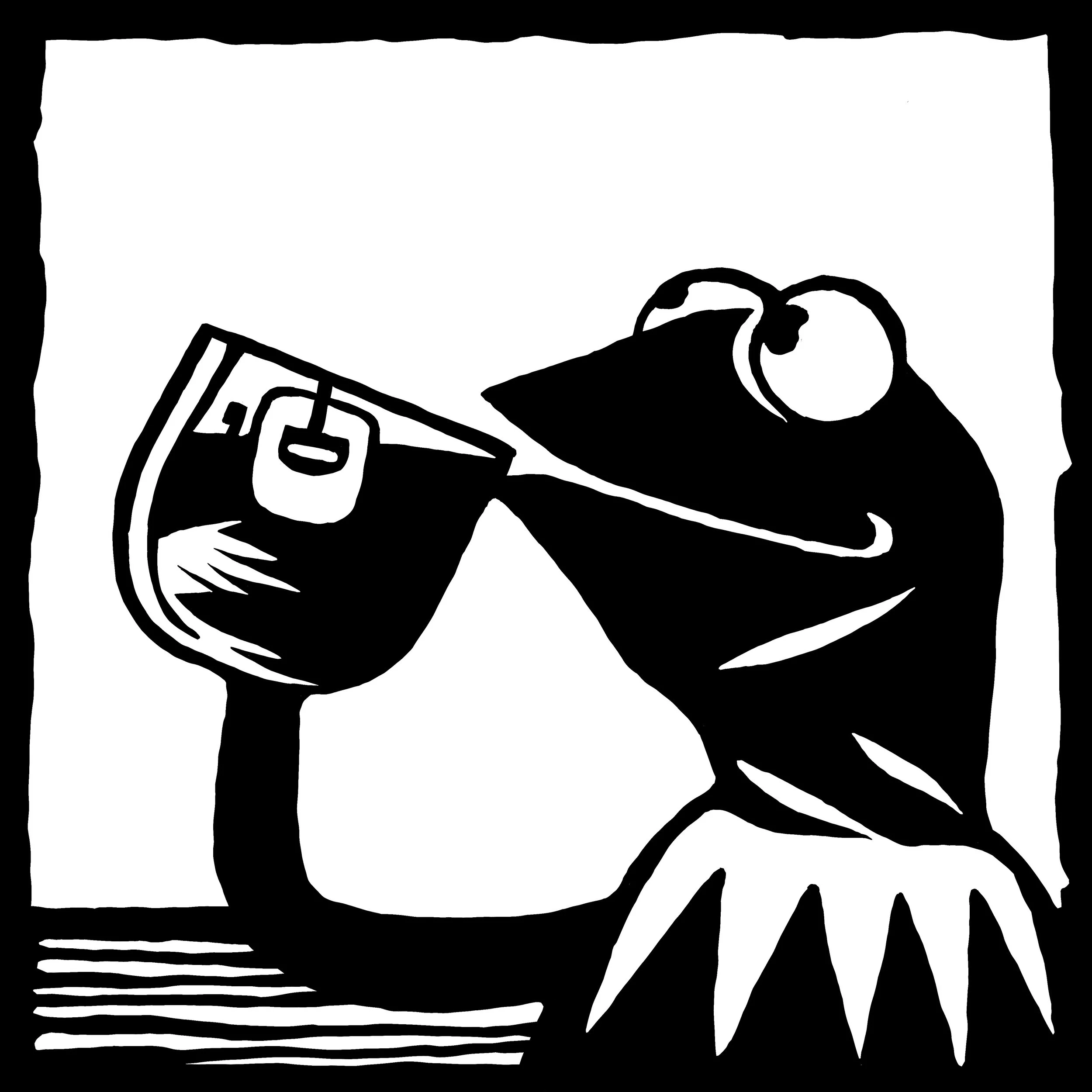MEME ART:
Imagined & Designed by everyone; Hand-Crafted by someone.
My latest series explores the MEME as a form of contemporary art. I’m fascinated by what makes a pop culture meme instantly recognizable, and how that recognition shifts depending on who’s describing it; whether it’s grandparents, children, or artificial intelligence. Memes make us laugh, they provoke thought, they help us express ourselves when words aren’t enough. So why shouldn’t they be considered Art with a capital A?
“The ‘Artist’ prolly used AI, but that’s none of my business.”
Take the famous “but that’s none of my business” meme featuring Kermit the Frog drinking Lipton tea, often used as a sarcastic expression while insulting questionable behaviors in everyday social situations. I created a series of interpretations: one titled “frog drinking tea,” another “frog drinking Lipton tea,” and a third “frog Puppet drinking tea.” Which was the AI interpretation? Which was my mother’s? Each variation captures something slightly different. But where is the tipping point? When does a meme retain its identity, and when does it lose its original meaning through subtle, or not so subtle, changes?
Who gets to decide that “frog drinking tea” isn’t enough? That it’s no longer funny, or no longer the meme? ABC’s Good Morning America once referred to it with the hashtag #tealizard, an amusing misfire, whether from someone too young to know a frog isn’t a lizard or too out of touch to understand the meme.
Are memes a form of crowdsourced art? Which is your favorite, and which do you use most often?
By nature, memes are meant to be copied, altered, and shared rapidly. They’re digital, ephemeral, and constantly evolving. But they also reflect our culture, humor, and collective voice. Will we remember them in 20 years? And if we do, how will their meanings have changed?
To preserve them and anchor them in time, I’m turning them into art. I’m elevating something disposable and mass-produced by devoting hours of meticulous hand-cutting to create elegant black and white pieces. This labor transforms the digital into the tangible, the fleeting into the permanent. It’s a gesture similar to Warhol turning a can of Campbell’s soup into high art. But while I still have physical soup cans in my pantry, memes exist only on our screens… until now.


